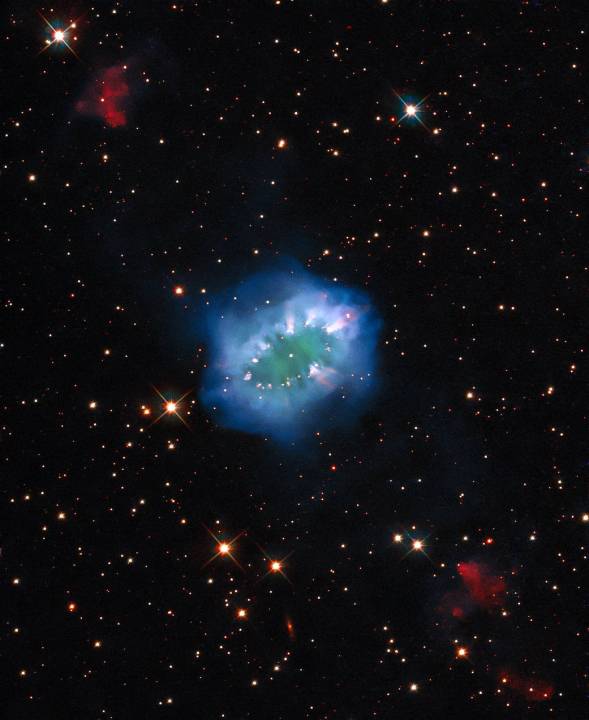
Around 10,000 years ago, two stars that had been orbited each other peacefully came into a sticky conflict when the larger of the two came too close to its companion and ballooned outward, engulfing the other. The resulting mess of a bloated star spun so quickly that it threw off its outer layers, forming a bubble of gas which expanded out into space, eventually stretching over two light-years wide.
This dramatic event formed the beautiful Necklace Nebula, also known as PN G054.2-03.4, located 15,000 light-years away in the constellation Sagitta (the Arrow). This nebula was recently captured by the Hubble Space Telescope in the image shown above. The ring of gas is dotted with clumps of gas that shine brightly like jewelry, for which the nebula was given its name. The gas glows as it is illuminated with ultraviolet light produced by nearby stars, giving the nebula its distinctive appearance.
Even after their dramatic conflict, the two stars at the heart of the nebula continue to orbit each other closely. They are just a few million miles apart and orbit each other in just over a day. They are so close together that they appear as a single dot in the image.
This is not the first time that Hubble has imaged this particular nebula. It also captured the image below in 2011, when the nebula had only recently been discovered. Hubble used its Wide Field Camera 3, installed in 2009, to take this image.

Since 2011, Hubble’s hardware has remained largely the same, but software has improved, such as image processing technology. This allowed the creation of a crisper image of the target which shows more detail than the version from 10 years prior. The latest image is a composite, including images taken by the same Wide Field Camera 3.
Editors' Recommendations
- Celebrate Hubble’s 34th birthday with this gorgeous nebula image
- Hubble snaps an autumnal nebula glowing orange from young, hot stars
- Stunning nebula 15,000 light-years away imaged by VLT Survey Telescope
- Hubble observes weird star system with three off-kilter, planet-forming disks
- Unique black hole is trailed by 200,000 light-year-long tail of stars




